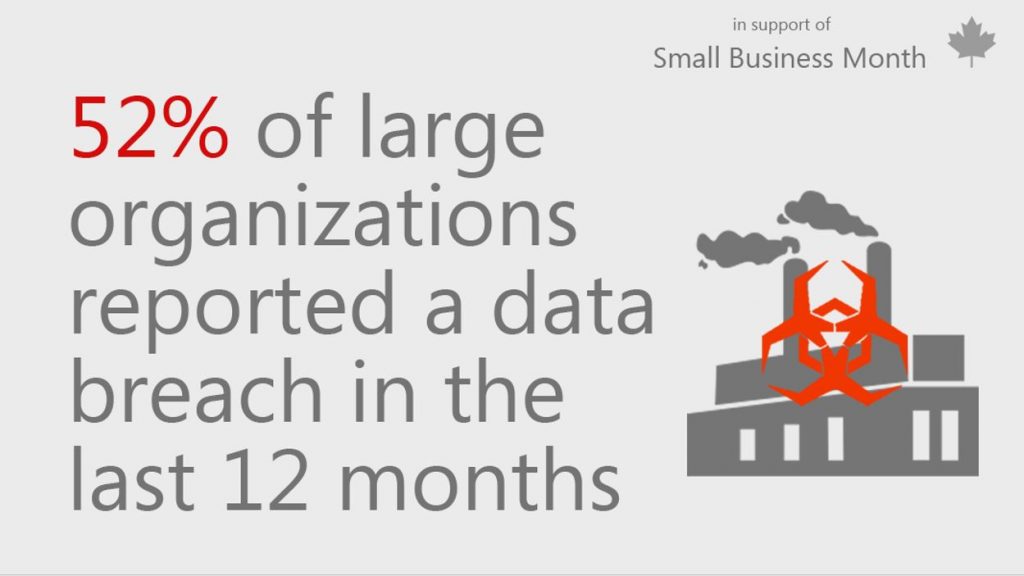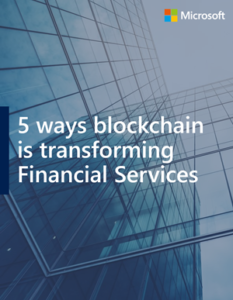
Better security, lower fees, & other reasons to fall in love with blockchain

Welcome to Day 18 of Business Self-Defense from Microsoft Canada. Today, we look at blockchain. What is it and why should large—or any sized organization for that matter—care? We talk about how this technology can lower fees, improve security, and transform how consumers and businesses transact through the adoption of this ledger technology.
What’s blockchain?
First, blockchain is not a bank or a digital currency, such as Bitcoin. These shared ledgers run on distributed networks of computers and act as transparent and verifiable systems. Participants share an open, permanent, and publicly-verifiable database of records (or blocks). They simply add to this shared ledger to make payments, store legal contracts, handle loans and bonds, and so on.
It’s landed!
While it may not have captured Hollywood’s imagination like AI, this technology plays as pivotal a role in the digital economy. Businesses already use blockchain as a common data layer to enable a new class of applications. It allows them to share processes and data across multiple organizations, eliminating waste, reducing the risk of fraud, and creating new revenue streams.
Secure by design
By applying tried-and-true digital signature and encryption technologies, these solutions help reduce fraud and establish trust and accountability. Because it runs on a distributed network, blockchain reduces the risks (and the days of delays and associated fees) of dealing with centralized payment providers.
Lower fees?
Yes. This method of handling payment should help small business avoid rising transactional fees. That’s good news for cash-strapped businesses who struggle with banking and credit card costs. Blockchain represents an emerging alternative that costs less, streamlines processes, and reduces fraud.
Financial institutions
Canada’s big banks, to their credit, seem to see this all as a disruptive opportunity, not a threat. Geoff Zochodne’s article at the Financial Post goes into detail on the proliferation of patents already held by banks, including TD. He also reports that RBC has filed a patent application for a credit-rating score using this technology. Expect to see more from them soon…
Governments like it, too
Of course, the non-profit sector, including governments are betting on this approach, too. In 2018, the National Research Council Canada successfully launched the fed’s first-ever live trial of public blockchain technology for the transparent administration of government contracts. In the United States, Steve Delahunty’s article at Forbes.comprovides some examples of how agencies, like the FDA, use it as well.
Big benefits
Secure. Fast. Cheap. That’s an almost perfect mix of benefits for almost any sized business. Canadian fintech entrepreneurs, developers, investors, banks, and regulators have discussions and/or their projects in the works. Do you?
Ready to develop your own blockchain solution? Check out the Blockchain Workbench in Azure, which can rapidly accelerate your time to market!
Coming to an app near you
Whether you build your own app or just subscribe to one, it seems like there’s a lot to love about blockchain. Most of all, you have to recognize its disruptive potential. We’ve seen Airbnb challenge the hotel industry, Uber target the taxi business, and Amazon redefine retail—will payment processing be next?
How to get started
Look for it -> When you shop for services, look for blockchain solutions
Ask around -> Talk to your bank/credit union and other financial vendors
Find out more -> Check out the Azure Blockchain Workbench
Free ebook

Imagine if there was a way for you to manage counter-party transactions with lower risk and fewer error-prone manual processes. “5 ways blockchain is transforming Financial Services” explores how blockchain can help you reduce costs, collaborate more easily, create new business models, and simplify customer experiences. Link here.




